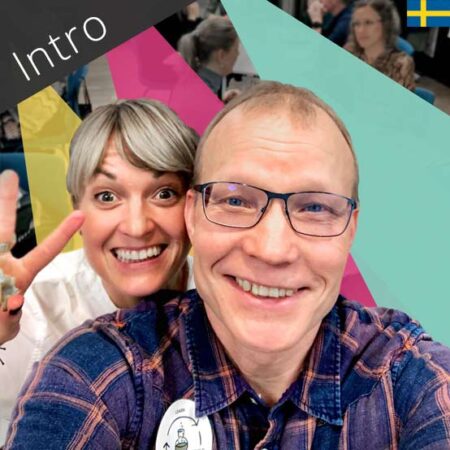One of the conditions of a Team is continuous coaching. This is to enable the team to become high-performing and well functioning. Without putting time and effort into team coaching it is very hard to become high-performing as a team, and most teams need experts to support in the beginning to move beyond friction and into the phase of the structure.
The 5 Stages of a Team

1. Inclusion
The team meets and learns about the work that needs to be done and what’s expected of them. Members avoid disagreement because they fear rejection at this stage, making the leader a central role providing
direction. There is a desire for order, roles, and structure.
The need of the team: All team members understand the purpose of the team and want to be part of it. Team members know and accept each other and feel accepted as a member of the team.
The leaders role: Provide structure. Make sure everyone is included. Initiate open discussions of values & goals.
Common leadership pitfalls: Analysis paralysis / Not daring to make decisions. Thinking the leader need to have all answers.
2. Friction
The team starts challenging the defined boundaries, such as process and working agreements and voice differences in individual working styles and behaviors. Team members challenge each other. Some question the team’s goals altogether. Typically, this will be a challenging phase.
The need of the team: Understanding of each other’s behavioral style and intention. Improved ability to resolve disagreement effectively.
The leaders role: Support, coach & train the team in how to keep an open dialogue. Help solve conflicts. Build trust.
Common leadership pitfalls: Picking on individuals – stay focused on ideas, not personalities. A leader that’s unwilling to compromise. A belief that the team needs conflict to advance from this stage – allow disagreement but don’t foster conflict.
3. Structure
The team has the ability to resolve disagreement and integrates their personal differences. They revisit goals and objectives and redefine structures, working agreements, roles, and processes to support them.
The need of the team: Time to work out structures within the team such as processes, goals, roles, and working agreements. Everyone feels that issues regarding ways of working that are important to them have been discussed.
The leaders role: Act as consultants when needed. Support by removing impediments outside of the team.
Common leadership pitfalls: Not taking the time to make sure everyone’s perspective is represented. Trying to get everyone to conform to the same values. Trying to find the perfect solution.
4. Performing
The team have agreement on goals and objectives and work towards them together. The team is competent in decision making and conflict resolution with minimal or no supervision. The team rapidly gains important knowledge through knowledge sharing – there’s no information hoarding. Relationships and results are equally important.
The need of the team: The team is self-managed and continuously evaluate their own performance.
The leaders role: Share responsibilities with the team. Reward initiative. Coach & facilitate individual development.
Leadership pitfalls: Expecting to not have to further improve and still maintaining high performance.
Signs of what phase the team is in
1. Inclusion
▢ Team members are highly dependent on the leader — leader talks, members nod
▢ Team members are polite, do not disagree with each other, and do not challenge each other
▢ Focus on pseudo-work – for example exchanging stories about customers or their families that are irrelevant to the task at hand
▢ Team members stick to safe topics
2. Friction
▢ There is visible and invisible disagreement between team members
▢ Disagreement leads to questioning of the group’s existence
▢ Team members turn to their favorites or no-one for help because trust is not yet established
▢ Participation is varied and unbalanced. Some are checked out, some are reserved, and conversations are often dominated by a few members
▢ Sub-groups are exclusive and not welcoming to other team members
▢ There’s competition between team members
▢ Unvoiced opinions start surfacing–maybe along with
frustration
▢Team members challenge irrelevant details
3. Structure
▢ The team starts making use of each others strengths, asks for differing points of view, and integrates differences, and as a result, it becomes difficult to see who the leader is
▢ The whole team works together to refine structures, processes, roles, working agreements, and goals
▢ Disagreement is brought up and settled effectively
▢ Team members express a sense of relief over low anxiety levels
▢ Team members remain empathetic towards each other even at times of disagreements
▢ Cohesion around the product, process, and behaviors, starts being developed
4. Performing
▢ Work appears to be effortless
▢ Evaluation is focused on performance and impact rather than structure and relationships
▢ There’s a balance between process and task orientation
▢ Team members display high levels of interdependence (mutual reliance)
▢ Tasks & communication have high levels of clarity and are cohesive towards the purpose of the team.
Coaching Agile Teams Guide
Download the guide to reflect and help the teams at all times. Many times when conflicts arise in a team, you need to address it right then. And pointing out that they are in the phase of friction, and that it is very natural usually helps the team a lot to also overcome the conflicts more easily.


